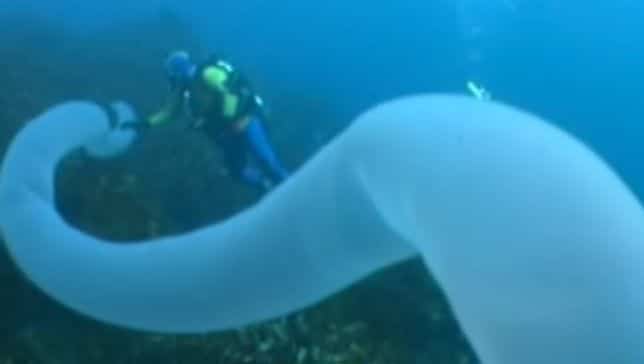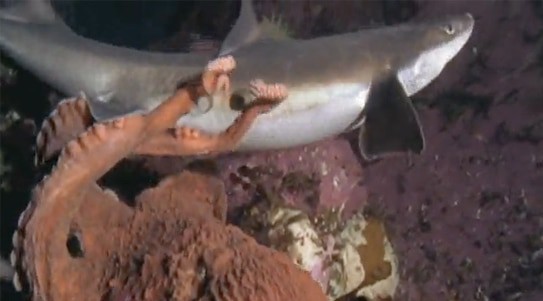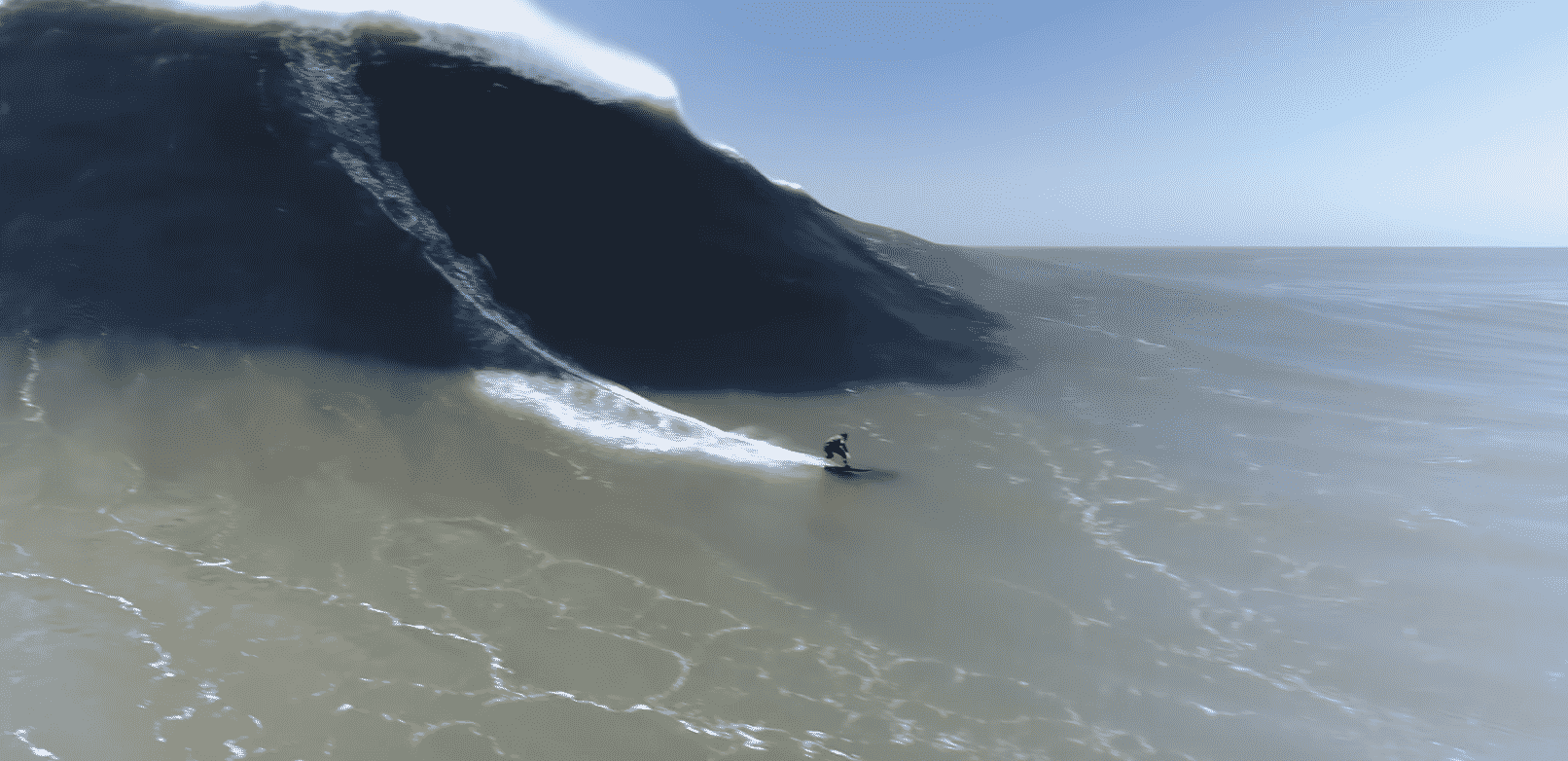
These giant creatures look like they belong in a low budget sci-fi flick. To make them even more surreal, they are bioluminescent and will light up when touched, but they’re very real. These animals were filmed off the Tasman Peninsula in Tasmania, Australia – one of the few areas in the world where a wide range of oceanic gelatinous plankton, including ctenophores and jellyfish, comes close to shore, and is easily seen while diving.
So, what exactly are they? They’re called Pyrosomes. Pyrosomes and salps are pelagic (free-swimming) tunicates or sea squirts. All species are open ocean animals that rarely come close to shore, and all are colonial, although many salps can also be solitary.
Pyrosomes are colonies of tiny animals that form hollow tubes sealed at one end – the long tube species in the first part of the video is giant pyrosome Pyrostremma spinosum – it can reach 30m in length! Pyrosomes get their name (Pyro = fire + soma = body) from their ability to emit light (bioluminescence) – colonies can glow or flash light at night, particularly if touched.
Salps have much larger individuals than pyrosomes, individuals pump water through themselves. Colonies are formed of chains of individuals. Salps can form very high densities under good conditions, and are an important oceanic food source for fish.







